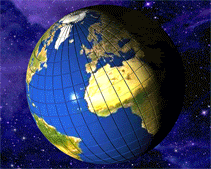Author Madeleine L'Engle passed away this Thursday at the age of 88. Ms. L'Engle, a resident of Connecticut, wrote some 60 books in her career, but the most well known, and the one for which I remember her, was A Wrinkle in Time. The book written for young teens was a favorite of young people and "won the American Library Association's 1963 Newbery Medal for best American children's book."
I almost missed this story as it was in a list which also included Madeleine McCanns, the missing little English girl. I would imagine the odds of having two current stories, both about Madeleine's, are pretty slim.
A Wrinkle in Time is a science fiction tale of a small family who's father goes missing. The kids include a girl named Meg, her genius brother (very young, like three or four if I remember), and her boyfriend named (I think) Calvin. I don't remember the genius brother's name. It could have been something like Charles Wallace. They get summoned or some such to go traveling along a space-time warp (called a tesseract) and save their father from some terrible prison. I don't remember the specifics about that.
There was a "good witch" called Mrs. Who, and another called Mrs. Whatsis. Or maybe just one of them existed. One of the chapters, involving a mirthful fortune teller, was entitled The Happy Medium. This has always been one of my favorite puns.
If I remember, a tesseract is a real term. It refers to a dimension which includes both time and space. For instance, a piece of paper is two dimensional. You see a flat surface when you look at it. You can cut it out into paper dolls, but it's still flat. Then you have cubes, balls, pyramids, cylinders, and more and more complex shapes that we call three-dimensional. They're not flat. If you turn them around (or move around them) they present different faces. As you move toward or away from them, their perspective changes (That is also possible for two-dimensional objects, but only as seen in three-dimensional space).
Time is the fourth dimension. A point has zero dimension. If you move that point in one direction, you get a line, which we call one-dimensional. If you move that point or line in two orthogonal (at 90-degrees to each other) directions, you get a plane (a piece of paper) which is two-dimensional. Move a point, line, or plane in three orthogonal directions and you get an object which is three-dimensional.
But the fourth direction is that of moving an object in space. You can't see the continuum of the moving object. For instance, we see the continuum of a point which has been moved, as a line. But we have no representation for the continuum of an object which has been moved. We need time to see that. And we can only see that one instant at a time. But imagine if we could somehow see this fourth dimension. Or at least comprehend it. That is a tesseract. A tesseract is to an object what an object is to a plane, and a plane is to a line, and a line is to a point.
I'll admit I'm going by memory on all of this. I'm not avoiding research because I'm lazy. I just wanted to see how much I could remember about A Wrinkle in Time and tesseracts since I found both so fascinating when I was young.
Thank you for your contribution to my life Madeleine L'Engle.
Post Script: I found a much more in depth article about Ms. L'Engle than the one linked to above. My memory wasn't too far off. I may pick up one or two of her adult books (no not that kind of book) to read.

Saturday, September 8, 2007
A Wrinkle in Our Time
Posted by
Yar
at
9/08/2007 10:00:00 AM
![]()
Subscribe to:
Post Comments (Atom)






No comments:
Post a Comment